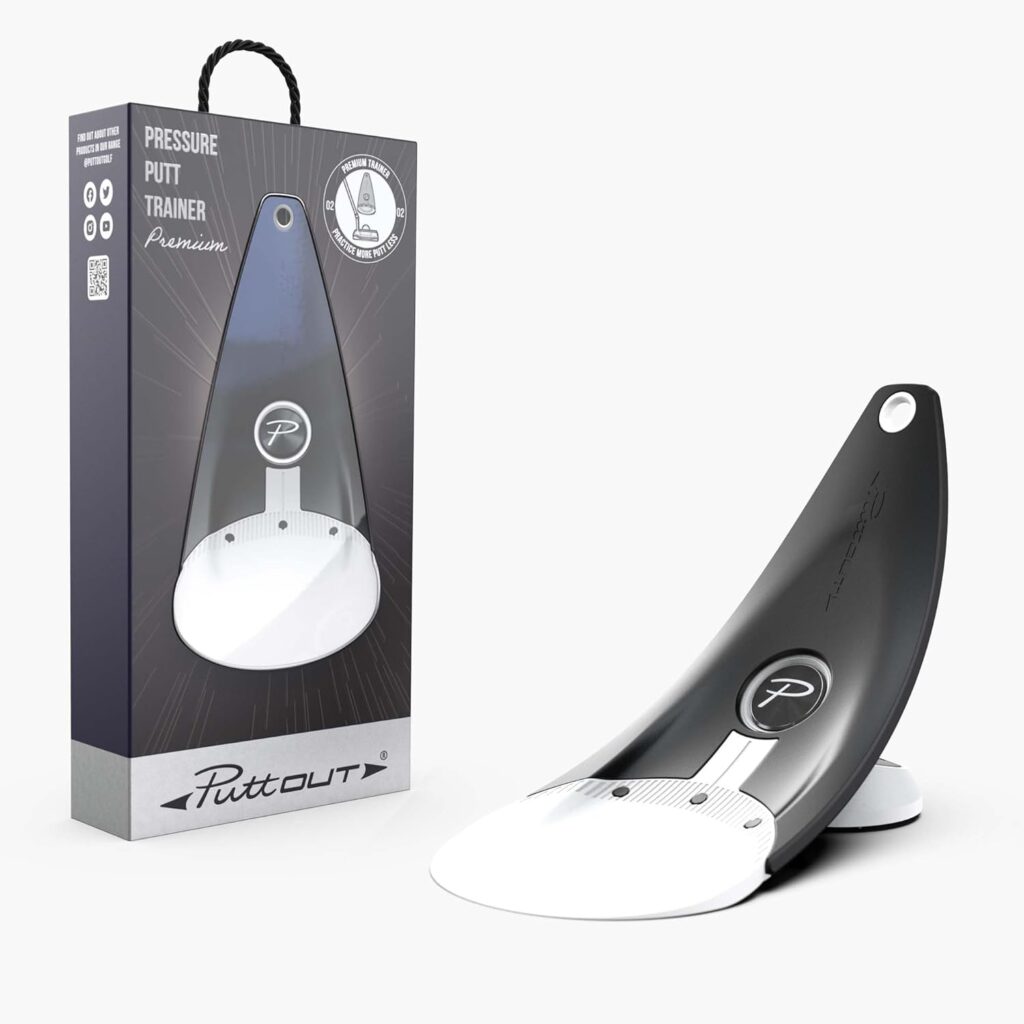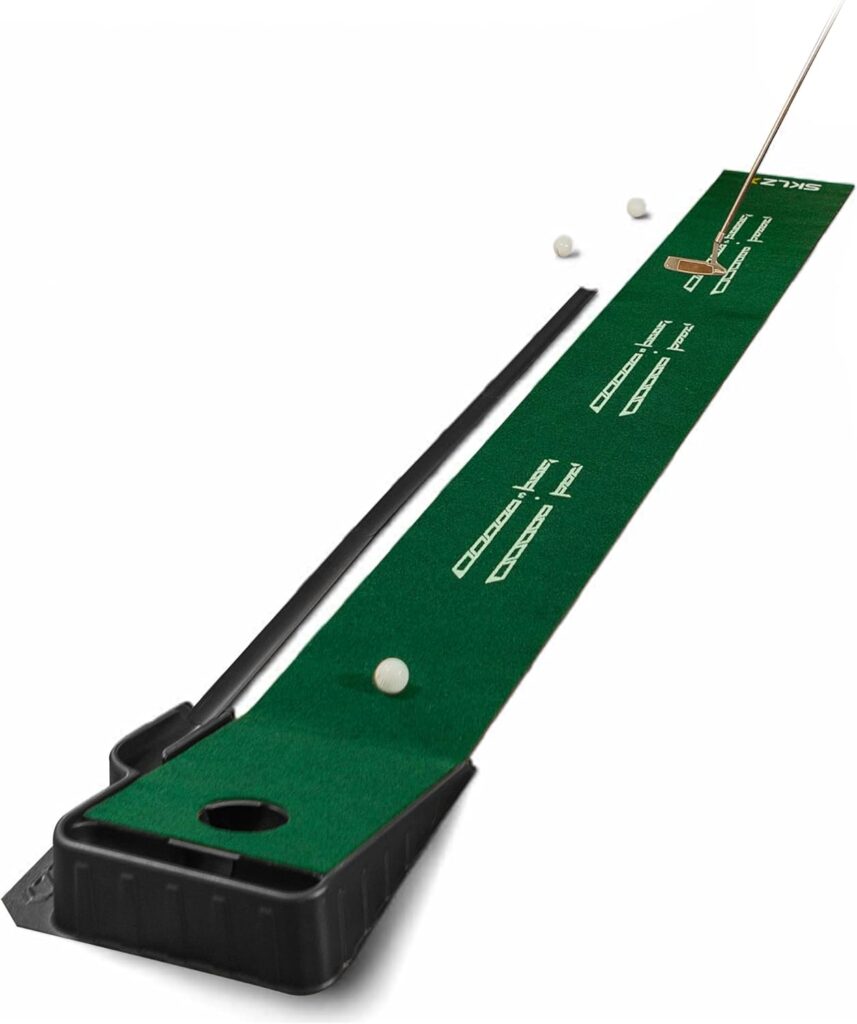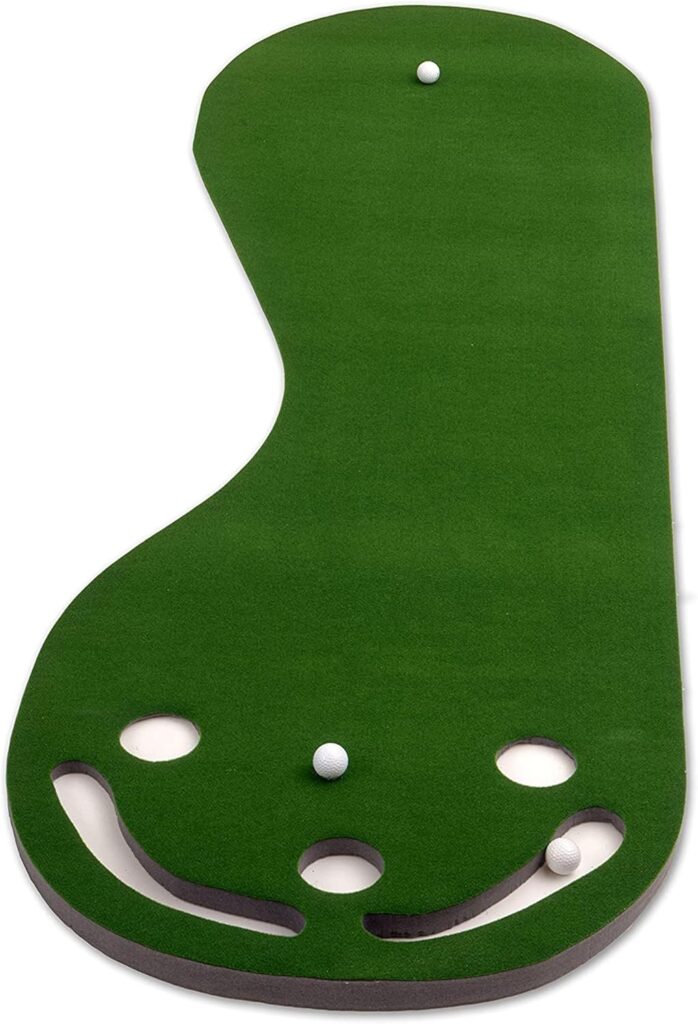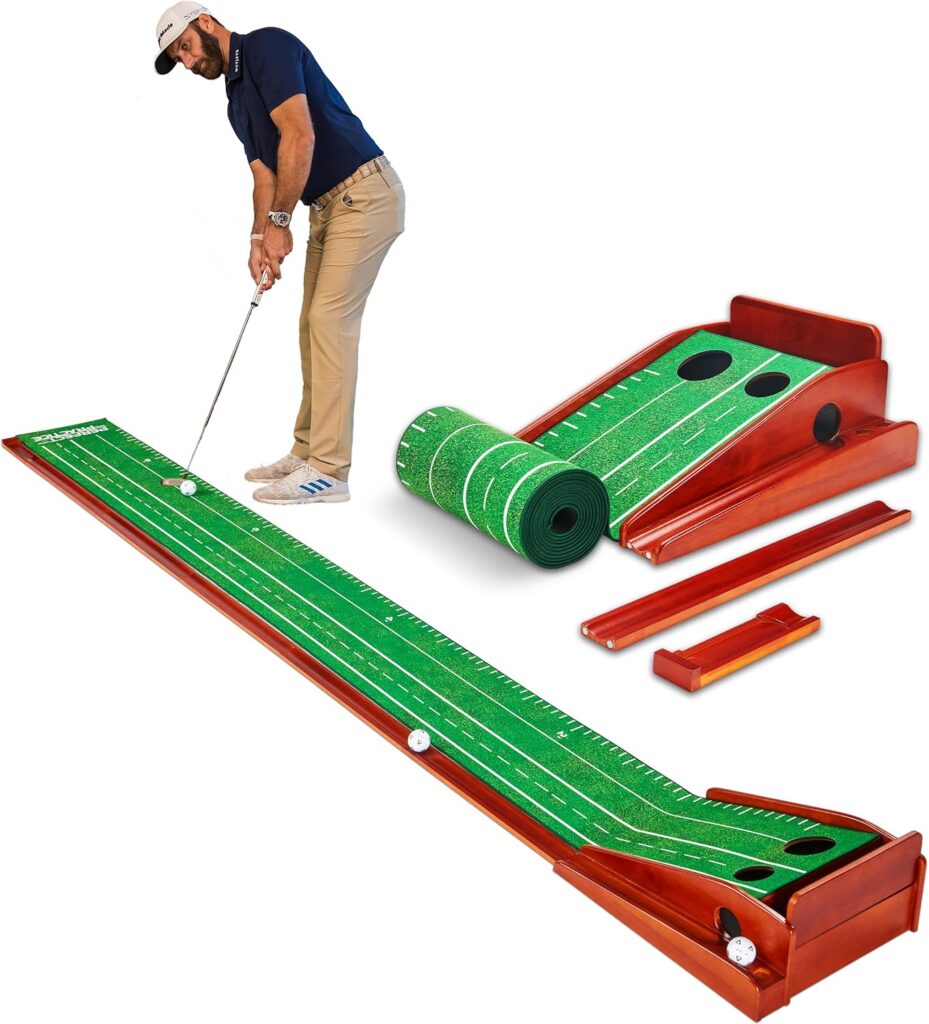Best Putting Return Machine
One tool that has revolutionized my practice routine is the putting return machine. These devices have allowed me to focus on perfecting my stroke without the constant interruption of retrieving balls.
In this comprehensive guide, I’ll share my top picks for the best putting return machines available, helping you choose the ideal training aid to elevate your game.
Why a Putting Return Machine is Essential
Putting return machines offer several key benefits that can significantly improve your practice sessions:
Efficiency: With a return machine, you can maintain a steady rhythm and focus entirely on your technique. No more wasting time and breaking concentration to collect balls after each putt.
Consistency: Regular practice with a return machine helps build muscle memory and refine your putting stroke. The ability to repeat putts from the same distance allows you to make micro-adjustments and develop a more consistent technique.
Convenience: These devices enable you to practice anytime, anywhere. Whether you’re in your living room, office, or backyard, you can squeeze in valuable putting practice whenever you have a few spare minutes.
Feedback: Many modern putting return machines provide instant feedback on the accuracy and speed of your putts. This immediate information allows you to make quick adjustments and speed up your improvement.
Now, let’s explore some of the top putting return machines on the market:
1. PuttOut Pressure Putt Trainer

The PuttOut Pressure Putt Trainer has taken the golfing world by storm with it’s innovative design and compact size. While it’s not an automatic return machine in the traditional sense, it’s unique features make it a standout choice for putting practice.
Pros:
- Extremely portable and easy to store
- Simulates real putting pressure
- Provides instant feedback on accuracy and pace
- Affordable price point
Cons:
- Doesn’t automatically return balls
- Limited to shorter putts (generally up to 6 feet)
The PuttOut’s parabolic curve is designed to return good putts and reject bad ones. This feature provides immediate feedback on the quality of your stroke.
The micro-target at the back of the device will only hold a perfect putt, helping you train for precision and consistency.
I’ve incorporated the PuttOut into my pre-round warm-up routine, and it’s become an indispensable tool for improving my short-range putting. The immediate feedback on each putt has helped me fine-tune my stroke and develop a more consistent pace.
While you’ll still need to retrieve your balls manually, the valuable feedback and pressure simulation more than make up for this minor inconvenience.
2. SKLZ Accelerator Pro

The SKLZ Accelerator Pro is a popular choice for golfers seeking a more traditional putting return machine. This 9-foot putting mat comes equipped with an automatic ball return system, making it ideal for consistent, uninterrupted practice.
Pros:
- Automatic ball return saves time and energy
- Alignment guides on the mat help improve stroke path
- Adjustable putting cup for varied practice
- Suitable for both indoor and outdoor use
Cons:
- Requires more space than some compact alternatives
- Mat quality could be improved for a more realistic feel
I appreciate the SKLZ Accelerator Pro for it’s simplicity and effectiveness. The alignment guides on the mat have been particularly useful for working on my stroke path.
By providing visual cues, these guides have helped me develop a more consistent setup and stroke, which has translated to better performance on the course.
The automatic return feature is a significant time-saver, allowing for more putts in a shorter practice session. While the mat quality isn’t quite as plush as some high-end choices, it still provides a decent rolling surface for effective practice.
3. Putt-A-Bout Grassroots Par Three Putting Green

While not a return machine in the traditional sense, the Putt-A-Bout Grassroots Par Three Putting Green deserves mention for it’s versatility and value. This kidney-shaped mat offers three putting cups and built-in sand trap cutouts for varied practice scenarios.
Pros:
- Multiple target holes for diverse practice
- Durable construction and portable design
- Non-slip backing for stability on various surfaces
- Very affordable price point
Cons:
- No automatic ball return
- May develop creases over time if not stored properly
The Putt-A-Bout has become an excellent addition to my home practice setup. While you’ll need to retrieve your balls manually, the many targets and sand traps add variety to your practice sessions.
This diversity helps prevent boredom and allows you to simulate different on-course scenarios.
I’ve found the Putt-A-Bout particularly useful for practicing breaking putts. By positioning the mat on a slight incline, I can simulate different green conditions and work on reading slopes.
The ability to putt to different targets from various angles has improved my adaptability on the course.
4. Perfect Practice Putting Mat

The Perfect Practice Putting Mat has gained popularity among both amateur and professional golfers. This high-quality mat features a wooden ball return system and a crystal velvet surface for a realistic putting experience.
Pros:
- High-quality, realistic putting surface
- Automatic ball return via gravity
- Two hole sizes for varied practice
- Clear alignment lines for stroke improvement
Cons:
- More expensive than some alternatives
- Can be noisy on hard floors
I’m a big fan of the Perfect Practice mat’s attention to detail. The realistic surface and precise alignment lines create a putting experience that closely mimics actual green conditions.
The automatic return, while gravity-powered as opposed to motorized, is effective and adds to the overall practice experience.
One aspect I particularly appreciate about the Perfect Practice mat is the two different hole sizes. The regulation-size hole helps build confidence, while the smaller hole challenges me to improve my accuracy.
This feature has been instrumental in developing my ability to hit the center of the cup consistently.
Perfect Practice Putting Mat
For those looking for a more advanced putting practice experience, the Wellputt High-Speed Putting Mat offers a range of features to improve various aspects of your putting game.
Pros:
- Multiple zones for speed and break practice
- High-quality, fast-rolling surface
- Includes training exercises and a companion app
- Suitable for various skill levels
Cons:
- No automatic ball return
- Higher price point
While it doesn’t have an automatic return, the Wellputt mat compensates with it’s comprehensive training system. The various zones and included exercises help you work on different aspects of your putting game, from speed control to reading breaks.
I’ve found the Wellputt mat to be particularly effective for improving my distance control. The different zones force me to adjust my stroke for various lengths, which has translated to better lag putting on the course.
The companion app provides structured practice routines and tracks your progress, adding an element of gamification to your training.
Choosing the Right Putting Return Machine
When selecting a putting return machine, consider the following factors:
Space: Ensure you have enough room for the device you choose. Some mats can be rolled up for storage, while others may need a dedicated practice area.
Measure your available space and compare it to the dimensions of the machines you’re considering.
Budget: Prices for putting return machines vary widely, so decide what you’re willing to spend. Remember that a higher initial investment might pay off in the long run if it leads to more consistent practice and improvement in your game.
Features: Decide which features are most important to you. Do you prioritize an automatic return, alignment aids, or surface quality?
Consider your specific putting weaknesses and choose a machine that addresses those areas.
Portability: If you plan to move your practice setup often, look for a more portable option. Some mats can be easily rolled up and transported, while others are more rigid and less travel-friendly.
Noise level: If you’ll be using it in a shared space or apartment, consider how noisy the return mechanism is. Some automatic returns can be quite loud, which might limit when and where you can practice.
Durability: Look for mats and return systems made from high-quality materials that can withstand regular use. Reading user reviews can give you a good idea of a product’s longevity and how well it holds up over time.
Realism: Consider how closely the mat mimics actual putting green conditions. Factors like surface texture, speed, and firmness can all impact how well your practice translates to the course.
Look for mats that offer a realistic roll and feel similar to the greens you typically play on.
Pro Tips for Maximizing Your Putting Return Machine
To get the most out of your putting return machine, consider implementing these tips into your practice routine:
Establish a routine: Set aside dedicated practice time each day or week to make the most of your investment. Consistency is essential in developing and maintaining your putting skills.
Vary your practice: Don’t just focus on straight putts. Use alignment aids to practice breaking putts and work on your green reading skills.
Try putting from different distances and angles to simulate on-course situations.
Use data to track progress: Keep a log of your practice sessions, noting things like the number of putts made, distance control accuracy, and any patterns you notice in your misses. This data can help you identify areas for improvement and track your progress over time.
Combine with other training aids: Consider using a putting mirror or alignment sticks in conjunction with your return machine to work on your setup and stroke path. These additional tools can provide valuable feedback on your posture, alignment, and stroke mechanics.
Simulate pressure: Set yourself challenges or compete against friends to add an element of pressure to your practice sessions. This can help you better prepare for real on-course situations where nerves might come into play.
Practice with purpose: Always have a specific goal or focus for each practice session. This could be working on your stroke path, improving your distance control, or increasing your make percentage from a certain distance.
Transfer skills to the course: Regularly take the skills you’ve practiced indoors out to the course to confirm you’re making real progress. This will help you identify any discrepancies between your practice environment and real green conditions.
Adapting Your Practice to Different Scenarios
To make your practice sessions more effective and applicable to real golf situations, try incorporating these scenarios into your routine:
Speed control: Use the length of your mat to practice putts of varying distances. Focus on consistently getting the ball to stop near the hole, even if it doesn’t go in. This will improve your lag putting and reduce three-putts.
Breaking putts: If your mat doesn’t have built-in contours, try placing thin objects under one side to create subtle breaks. This will help you practice reading greens and adjusting your aim for breaking putts.
Uphill and downhill putts: Elevate one end of your mat slightly to simulate uphill and downhill putts. This will help you adjust your speed control for different slopes, a crucial skill on undulating greens.
Pressure situations: Set up games or challenges for yourself, like having to make a certain number of putts in a row before ending your practice session. This simulates the pressure of important putts during a round.
Green reading: If your mat has many holes, try putting to different targets without changing your position. This will help you visualize different lines and breaks, improving your ability to read greens quickly and accurately.
Different lies: Place small objects under your mat to create uneven lies. This will help you practice putts where your feet are above or below the ball, a common scenario on many golf courses.
Grain simulation: If your mat allows, try brushing the surface in different directions to simulate grain on the greens. This will help you understand how grain affects the roll of the ball and how to adjust your stroke accordingly.
Common Pitfalls to Avoid
While putting return machines are excellent training aids, it’s important to be aware of potential pitfalls that could hinder your progress:
Overreliance on perfect conditions: While putting mats provide consistent surfaces, don’t forget to practice on actual greens when possible to maintain adaptability. Real greens have imperfections and variations that you need to be prepared for.
Ignoring setup and alignment: It’s easy to focus solely on the stroke, but remember to pay attention to your setup and alignment as well. A great stroke won’t matter if you’re not aimed correctly.
Neglecting short putts: Don’t just focus on long putts. Make sure to practice those crucial 3-5 footers that can make or break a round.
These shorter putts often have the biggest impact on your score.
Practicing without purpose: Always have a specific goal or focus for each practice session to make your time more productive. Aimless putting without a clear objective won’t lead to significant improvement.
Failing to transfer skills to the course: Regularly take the skills you’ve practiced indoors out to the course to confirm you’re making real progress. Be prepared to adapt your stroke to different green speeds and conditions.
Neglecting your pre-putt routine: Don’t forget to incorporate your full pre-putt routine into your practice sessions. This includes reading the green, taking practice strokes, and going through your mental checklist.
Ignoring the mental aspect: Putting is as much mental as it is physical. Practice visualization techniques and positive self-talk during your sessions to improve your mental game on the course.
Maintaining Your Putting Return Machine
To confirm your putting return machine continues to provide effective practice for years to come, follow these maintenance tips:
Clean regularly: Wipe down your mat and return mechanism after each use to prevent dirt and debris buildup. This will maintain the true roll of the surface and keep the return system functioning smoothly.
Store properly: If your mat is rollable, store it flat or rolled loosely to prevent creases and warping. For rigid systems, cover them when not in use to protect from dust and sunlight.
Check alignment: Periodically check that your mat is still properly aligned and that any built-in guides are accurate. Adjust as necessary to confirm you’re practicing with fix references.
Lubricate moving parts: For machines with mechanical return systems, apply a light lubricant to moving parts as recommended by the manufacturer. This will keep the return mechanism operating smoothly and quietly.
Replace worn components: Over time, certain parts of your return machine may wear out. Replace these promptly to maintain the effectiveness of your practice sessions.
Rotate usage areas: If using an indoor/outdoor mat, rotate the areas you practice on to prevent uneven wear and maintain a consistent surface throughout the mat.
Frequently Asked Questions
What is a putting return machine?
A putting return machine is a practice device designed to automatically return golf balls to the golfer after each putt. It typically consists of a putting mat or surface and a mechanism to collect and return the balls, allowing for continuous practice without the need to retrieve balls manually.
How much does a good putting return machine cost?
The cost of putting return machines varies widely based on features and quality. Basic models can start around $50, while high-end systems with advanced features can cost $300 or more.
Mid-range options with good functionality are often available in the $100-$200 range.
Can I use a putting return machine indoors?
Yes, many putting return machines are designed for indoor use. Look for models with non-slip backing and quiet return mechanisms if you plan to use them in your home or office.
Some machines are versatile enough for both indoor and outdoor use.
How long should a putting mat be for effective practice?
For most golfers, a putting mat of 8-10 feet in length provides a good balance between practicality and effectiveness. This length allows for practice on a variety of putt lengths while still being manageable in most spaces.
However, longer mats of 12-15 feet can provide more versatility for practicing longer putts.
Do professional golfers use putting return machines?
Many professional golfers incorporate putting return machines into their practice routines. These devices allow for high-volume repetition and consistent practice conditions, which are valuable for maintaining and improving putting skills.
How often should I practice with a putting return machine?
For noticeable improvement, aim to practice with your putting return machine at least 3-4 times per week, for 15-30 minutes per session. Consistency is key, so shorter, more frequent sessions are often more useful than longer, infrequent practice.
Can a putting return machine improve my green reading skills?
While most putting return machines focus on straight putts, some advanced models offer features to practice breaking putts. Additionally, you can create subtle breaks by placing objects under the mat.
However, to truly improve green reading, it’s important to complement machine practice with time spent on real greens.
What’s the difference between a putting mat and a putting return machine?
A putting mat is simply a surface for practicing putts, while a putting return machine includes both a putting surface and a mechanism to return the ball to the golfer. Some products combine both elements, while others are sold separately and can be used together.
How do I choose the right putting return machine for my skill level?
Consider your current putting weaknesses and goals. Beginners might benefit from machines with clear alignment guides and basic return functionality.
More advanced golfers might prefer systems with adjustable speeds, many targets, and detailed feedback on putt accuracy and speed.
Can putting return machines help with speed control?
Yes, many putting return machines can help improve speed control. Look for models with many targets at different distances or those that provide feedback on the pace of your putts.
Practicing with these features can significantly enhance your ability to control the speed of your putts on the course.
Key Takeaways
- Putting return machines enhance practice efficiency and consistency by eliminating the need to retrieve balls manually.
- Options range from simple mats to advanced systems with automatic returns and feedback mechanisms.
- Consider factors like space, budget, features, and portability when choosing a putting return machine.
- Regular, purposeful practice with any putting aid can significantly improve your game.
- Combine machine practice with on-course putting to confirm skills transfer effectively.
- Maintain your putting return machine properly to confirm longevity and consistent performance.
- Vary your practice routines to cover different scenarios you might encounter on the course.
- Use data and feedback from your practice sessions to track progress and identify areas for improvement.